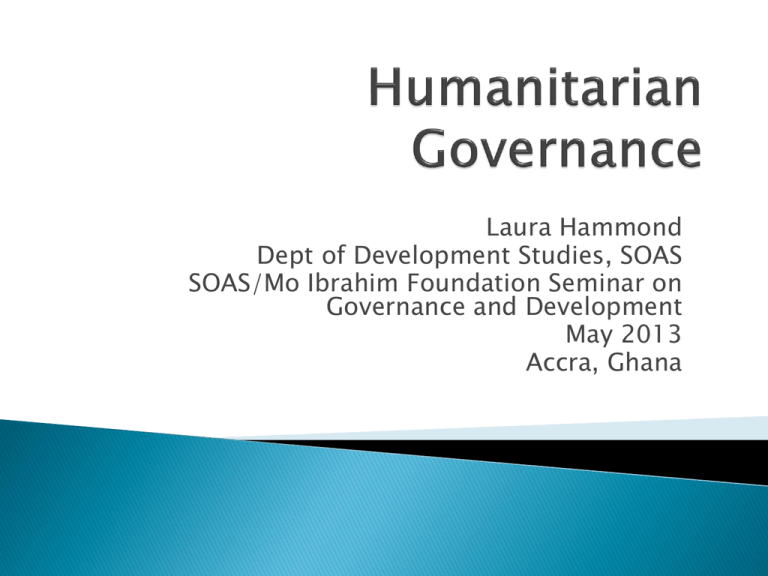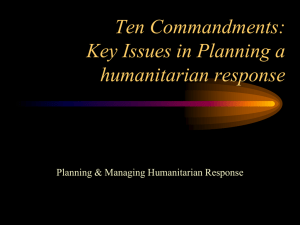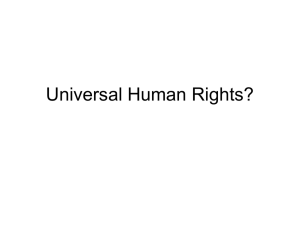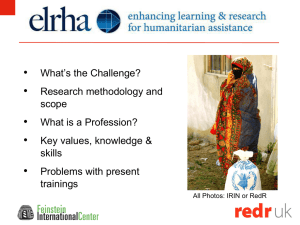Humanitarian Governance
advertisement

Laura Hammond Dept of Development Studies, SOAS SOAS/Mo Ibrahim Foundation Seminar on Governance and Development May 2013 Accra, Ghana Rules, structures and mechanisms for promoting accountable and effective humanitarian practice, including prevention, mitigation, management, response, and recovery from disasters of all types. ◦ Actors can include states (at all levels) but also regional bodies, LNGOs, INGOs, etc. Rapid onset disasters – floods, storms, earthquakes, communicable disease epidemics Slow onset disaster – drought, climate change effects, chronic disease at epidemic levels Complex emergencies – conflict, state failure - Usually these three are interrelated what is their reputation? what kind of relationship do they have with the state? with local people? Do they engage directly –including channelling funds through government? Does the state facilitate or constrain humanitarian action? 1970s-80s: donors gave through direct payment to the state, even balance of payments support (Harvey 2009). INGOs peripheral 1990s – shift to support through NGOs, Red Cross. Assumed states were too weak or corrupt to handle aid themselves 2000s – resurgence in interest in direct assistance – recognition of increasing capacity ◦ Emphasis on national ownership State has the first ‘Responsibility to Protect’ – Sovereignty has obligations and rights State ideally should be able to respond to risks/disasters on its own Where it requires assistance, it should be able to coordinate, approve intervention plans, see and approve budgets, and evaluate (or see evaluations) of external activities International norms & legal instruments can be used to back up national responsibility Provide protection & live-saving assistance if state cannot or will not Under IHL, states must, if they are unable or unwilling to assist civilians, grant access to an organisation ‘like the ICRC’. ◦ Doesn’t mean that all NGOs have a right to access Independence, Neutrality, Impartiality are Key ◦ HOs must choose between capacity building, service substitution, advocacy (& sometimes denunciation) ◦ Where states do not uphold social contract, IOs often see it as their role to speak out But adherence to principles may result in distance between HOs and govt Strong response can provide a political boost Conditionality regularly used to guide political policy Humanitarian assistance used for statebuilding, hearts & minds Humanitarian principles often used only with regard to humanitarian action & not development Without regulation/registration, international organisations are not likely to self regulate ◦ Some accountability mechanisms: Humanitarian Accountability Partnership, Red Cross Code of Conduct, Sphere Guidelines, etc. HOs often resist coordination efforts But regulation of humanitarian governance can also be used as a way of maintaining control over citizens, restricting LNGO activities, curtailing human rights Humanitarian (& Development) Governance part of wider governance debates Humanitarian space can be a ‘black hole’ of accountability Effective system comes from leadership as well as insistence on accountability & service from below Contradiction: provide support to government but preserve independence to be able to protect those who need it











